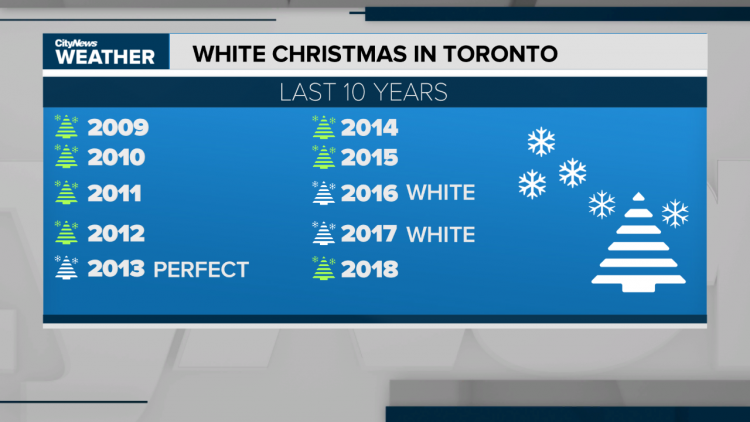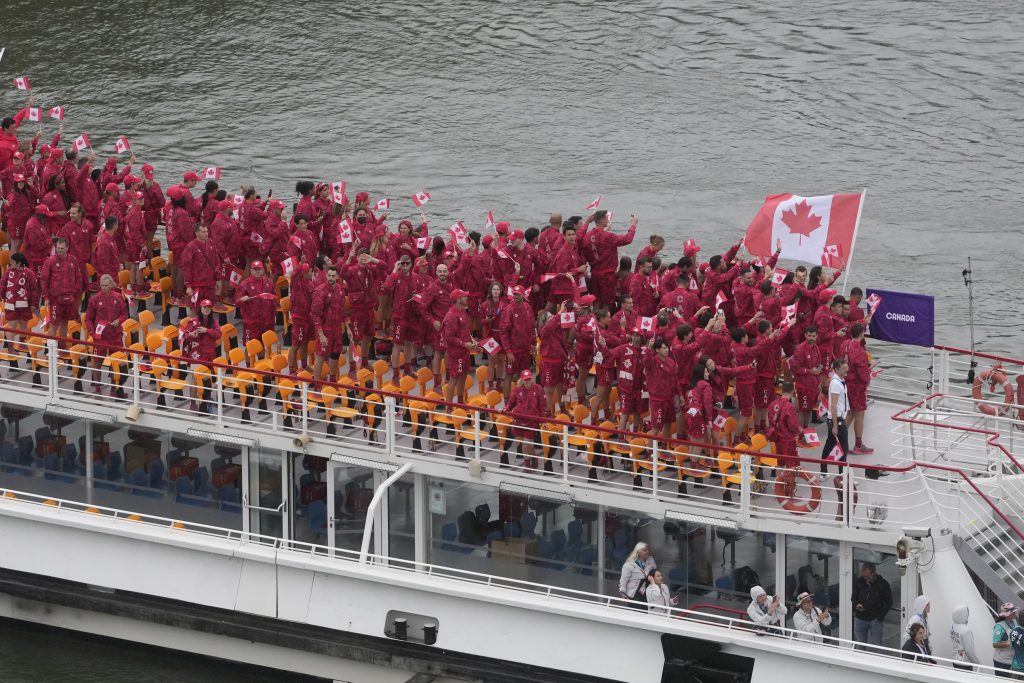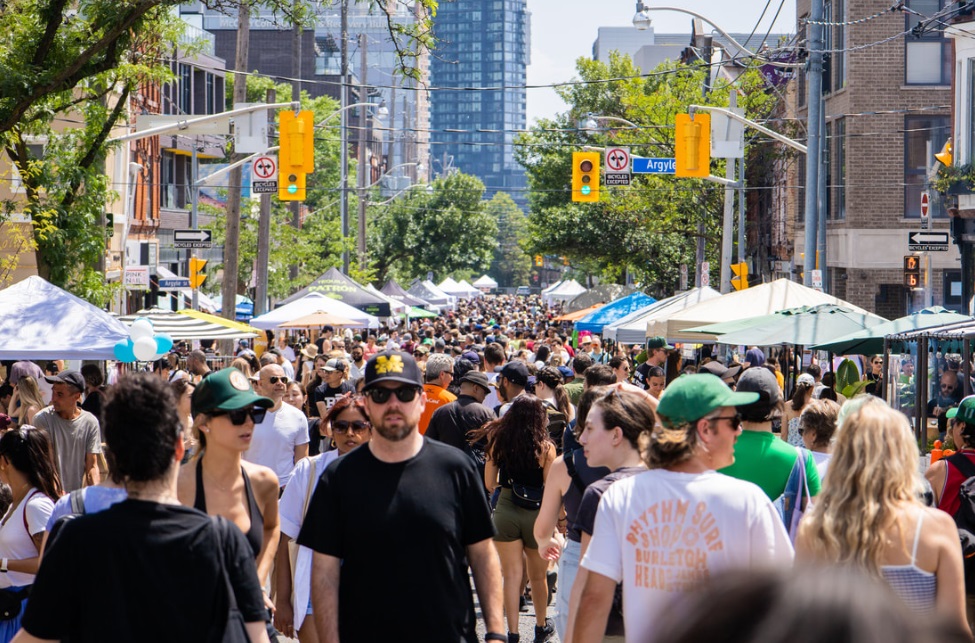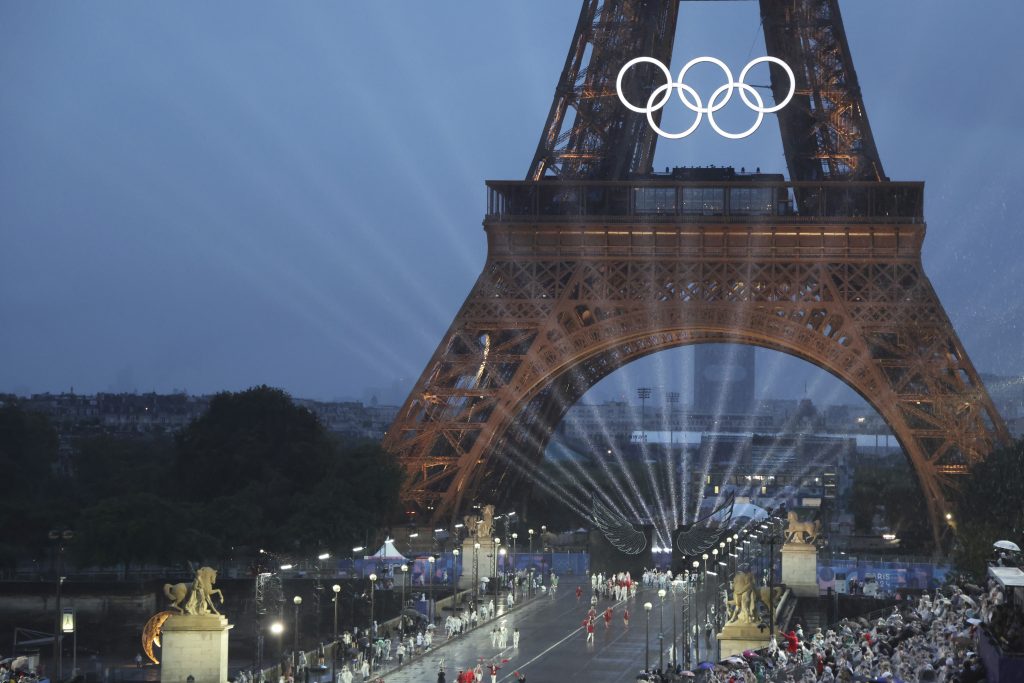Sorry folks: It’s going to look a lot like a green Christmas

Posted December 16, 2019 11:11 am.
I’m dreaming of a White Christmas … and you might need to keep dreaming too.
We are looking at a few potential snow-makers between now and Christmas Day, but none of them look too promising to drop a mega snowfall that will be big enough to stick around for the holiday morning.
If history can teach us anything, the odds are swinging toward a higher likelihood of seeing the grass while huddling around the tree.
What exactly qualifies for a white Christmas? When there is two centimetres of snow on the ground at 7 a.m. on Dec. 25, it’s considered a white Christmas.
A perfect white Christmas is when snow is falling and there is two centimetres of snow on the ground.
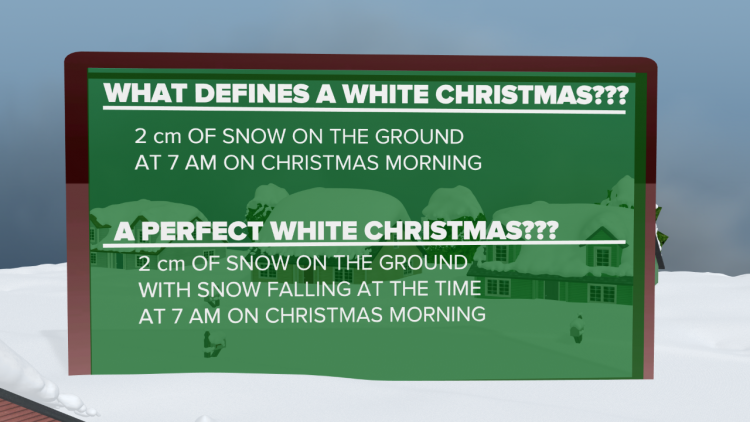
Out of the last 64 Christmases, 29 of them have been white, but only 10 in the last 31 years.
In the past 30 years, white Christmases don’t happen as frequently as they used to.
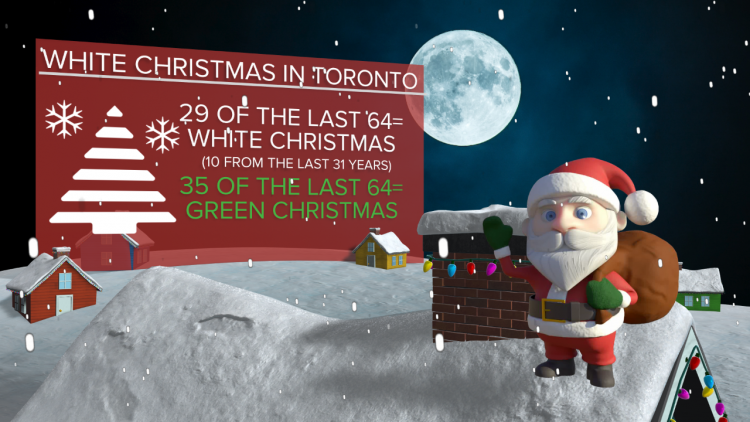
Most locations over the past 30 years have seen a drop-off in the number of snow covered Christmas mornings. In fact, only eight out of 45 cities that Environment Canada released statistics for have no change in frequency for the 30 years vs. the 30 previous.
Three cities, Victoria, B.C., Windsor, ON, and St. Johns NFLD, are reporting a higher frequency. All spots that probably don’t come first to mind when thinking of getting a White Christmas, right?
Three cities in Canada — Yellowknife, Kenora and Whitehorse, still have a perfect record for white Christmases.
My forecast for Christmas Day: Trend is above freezing with a few possible snow-makers; I give it a 20 per cent chance of a white Christmas happening.
